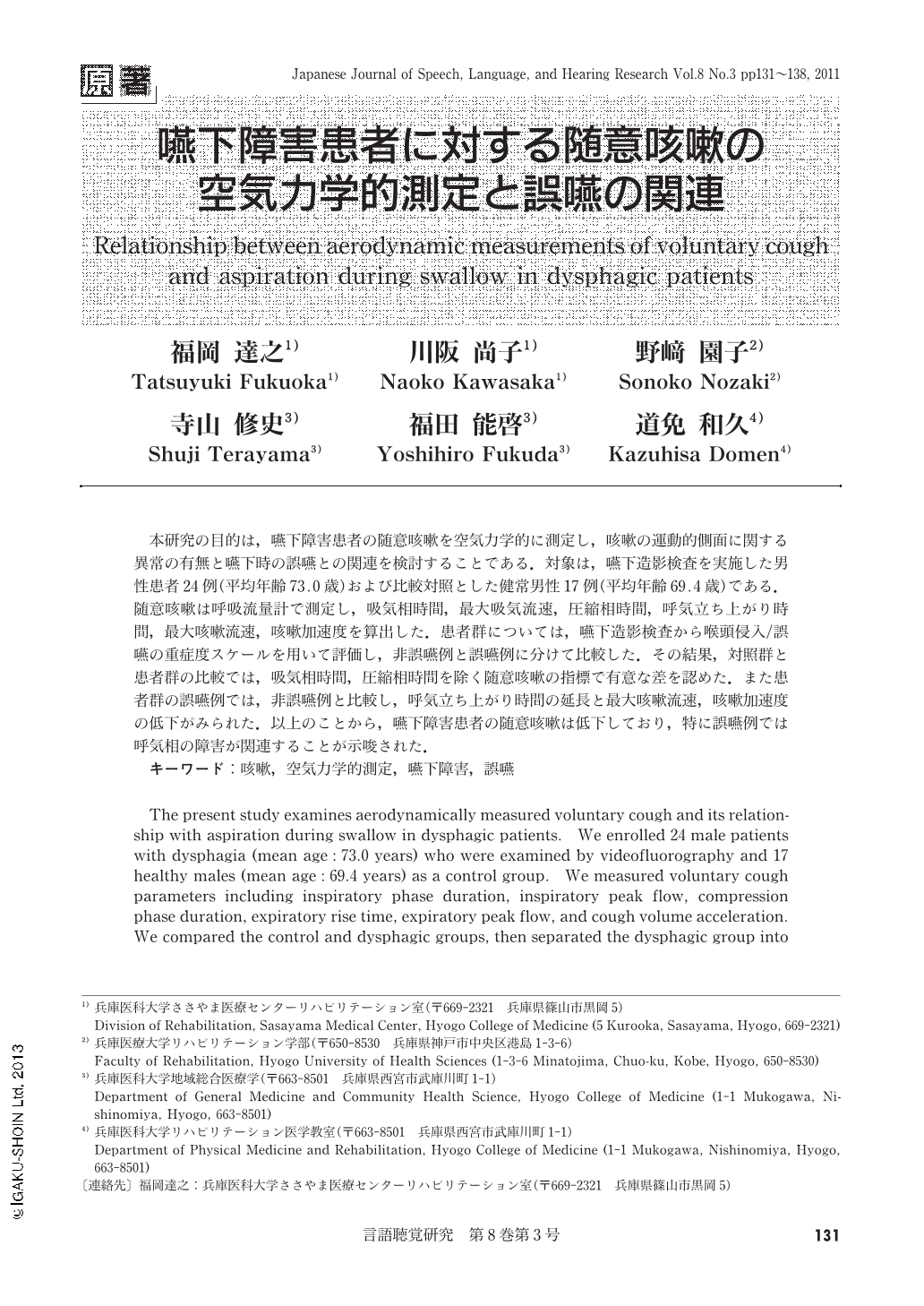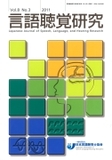Japanese
English
- 有料閲覧
- Abstract 文献概要
- 1ページ目 Look Inside
- 参考文献 Reference
- サイト内被引用 Cited by
本研究の目的は,嚥下障害患者の随意咳嗽を空気力学的に測定し,咳嗽の運動的側面に関する異常の有無と嚥下時の誤嚥との関連を検討することである.対象は,嚥下造影検査を実施した男性患者24例(平均年齢73.0歳)および比較対照とした健常男性17例(平均年齢69.4歳)である.随意咳嗽は呼吸流量計で測定し,吸気相時間,最大吸気流速,圧縮相時間,呼気立ち上がり時間,最大咳嗽流速,咳嗽加速度を算出した.患者群については,嚥下造影検査から喉頭侵入/誤嚥の重症度スケールを用いて評価し,非誤嚥例と誤嚥例に分けて比較した.その結果,対照群と患者群の比較では,吸気相時間,圧縮相時間を除く随意咳嗽の指標で有意な差を認めた.また患者群の誤嚥例では,非誤嚥例と比較し,呼気立ち上がり時間の延長と最大咳嗽流速,咳嗽加速度の低下がみられた.以上のことから,嚥下障害患者の随意咳嗽は低下しており,特に誤嚥例では呼気相の障害が関連することが示唆された.
The present study examines aerodynamically measured voluntary cough and its relationship with aspiration during swallow in dysphagic patients. We enrolled 24 male patients with dysphagia (mean age:73.0 years) who were examined by videofluorography and 17 healthy males (mean age:69.4 years) as a control group. We measured voluntary cough parameters including inspiratory phase duration, inspiratory peak flow, compression phase duration, expiratory rise time, expiratory peak flow, and cough volume acceleration. We compared the control and dysphagic groups, then separated the dysphagic group into non-aspiration and aspiration groups using a penetration-aspiration scale, and finally compared voluntary cough parameters between them. All parameters, except inspiratory and compression phase durations, differed significantly between the dysphagic and control groups. In addition, the aspiration group had prolonged expiratory increase times, depressed expiratory peak flow, and decreased cough volume acceleration when compared with the non-aspiration group. Voluntary cough decreased in the dysphagic group, and we considered that a disordered expiratory phase was specifically related to aspiration.

Copyright © 2011, Japanese Association of Speech-Language-Hearing Therapists. All rights reserved.


